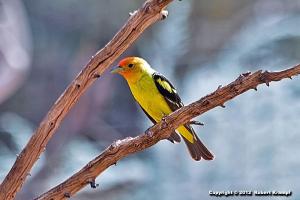
-
Mutualism
-
Parasitism
-
Commensalism
-
Predation
Answer:
-
Mutualism
In mutualism, both organisms benefit. While the vulture gets a free meal, the dead animal does not benefit. This is not mutualism.
-
Parasitism
In parasitism, one organism benefits at the expense of another. The vulture benefits, but the dead animal is not hurt, as it is already dead. This is not parasitism.
-
Commensalism
In commensalism, one organism benefits, but the other is not helped or hurt. The vulture benefits from an easy meal, and the dead animal is not helped or hurt. It is already dead. This is a commensal relationship.
-
Predation
In predation, one organism kills and eats another organism. While the vulture eats the dead animal, it does not kill them, so this is not predation.
Commensalism is one of the most difficult relationships to show, because even very small things can have a positive or negative effect. Barnacles that hitch a ride on a turtle's shell are often considered commensal, but the increased weight and drag in the water cost the turtle extra energy. The easiest examples of commensal relationships is when the neutral organism is no longer around, such as a hermit crab living in the shell of a dead snail.

